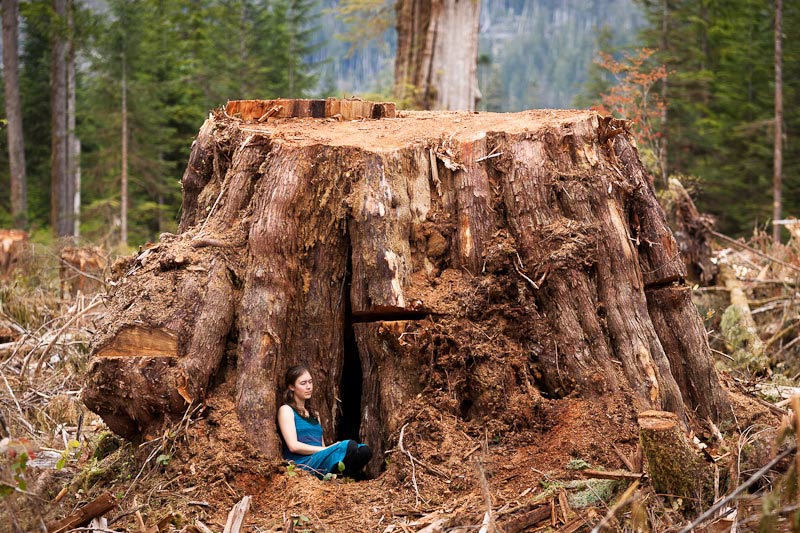
Almost 80% of Vancouver Island’s productive old-growth forests have been logged, including 90% of the valley bottoms where the largest trees grow and the richest biodiversity resides. Stumps as wide as 16 feet (5 metres) in diameter have been found freshly cut. The oldest stump to be dated in British Columbia was from a tree 1,835 years old! Below are photographs of only some of the big stumps that have been found. How many others are there? How many more will there be before this destruction is stopped?
Some viewers may find this content to be very disturbing. Viewer discretion is advised.

Upper Walbran Stump
Circumference: 44ft
Diameter: 14ft
Species: Redcedar
Valley: Upper Walbran Valley, Vancouver Island
Estimated Date Cut: 2006
Photographer: TJ Watt
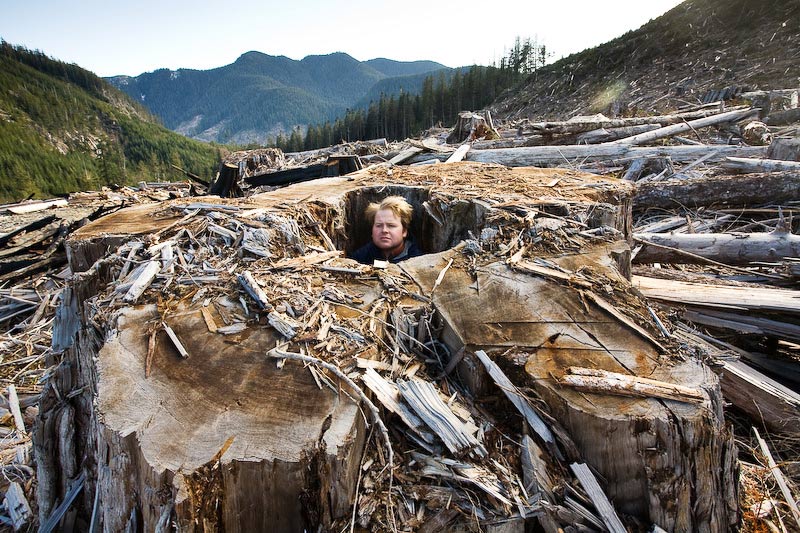
Gordon River Stump
Circumference: 38ft
Diameter: 12ft
Species: Redcedar
Valley: Gordon River, Port Renfrew Area, Vancouver Island
Estimated Date Cut: July 2007
Photographer: TJ Watt
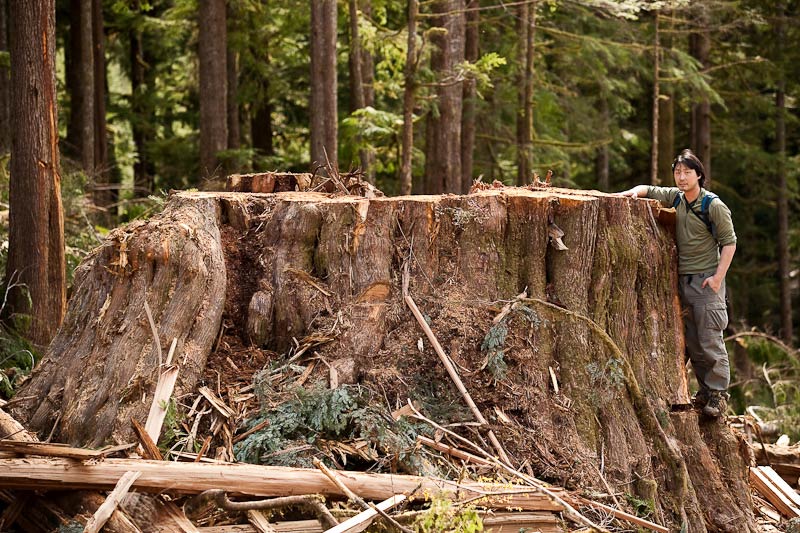
Gordon River Stump
Circumference: 40ft
Diameter: 13ft
Species: Redcedar
Valley: Gordon River, Port Renfrew area, Vancouver Island
Estimated Date Cut: March 2010
Photographer: TJ Watt
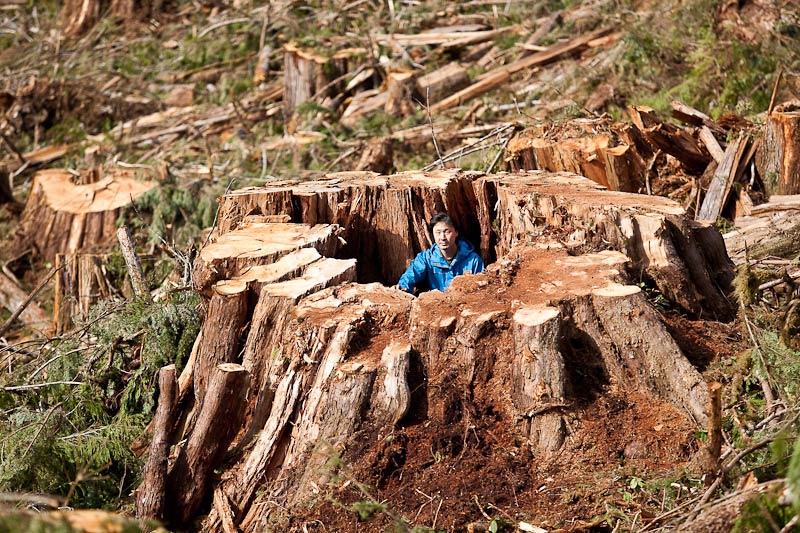
Gordon River – Hollow Stump
Circumference: 39ft
Diameter: 12.5ft
Species: Redcedar
Valley: Gordon River, Port Renfrew area, Vancouver Island
Estimated Date Cut: March 2010
Photographer: TJ Watt
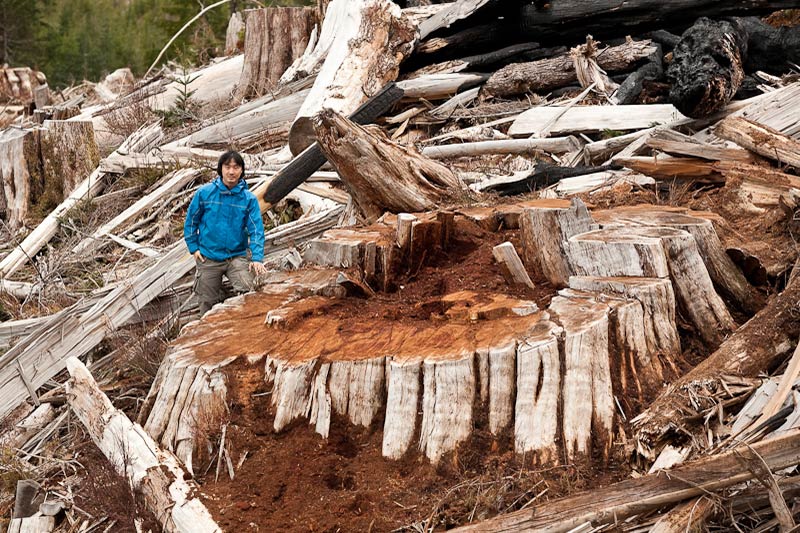
Bugaboo Creek Stump
Circumference: 45ft
Diameter: 15ft
Species: Redcedar
Valley: Bugaboo Creek, Gordon River Valley, Port Renfrew area, Vancouver Island
Estimated Date Cut: 2008
Photographer: TJ Watt
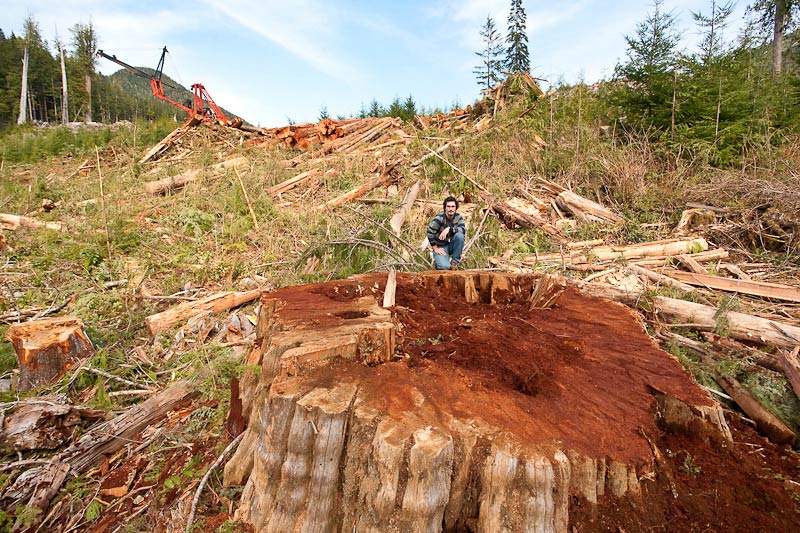
Gordon River Fresh Stump
Circumference: 44ft
Diameter: 14ft
Species: Redcedar
Valley: Gordon River, Port Renfrew area, Vancouver Island
Estimated Date Cut: March 2010
Photographer: TJ Watt
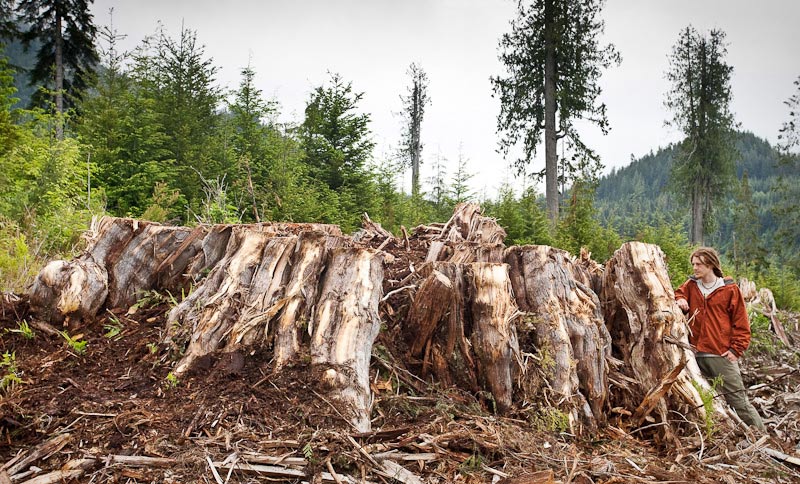
Gordon River Massive Stump
Circumference: 45ft
Diameter: 15ft
Species: redcedar
Valley: Gordon River, Port Renfrew area, Vancouver Island
Estimated Date Cut: 2010
Photographer: TJ Watt
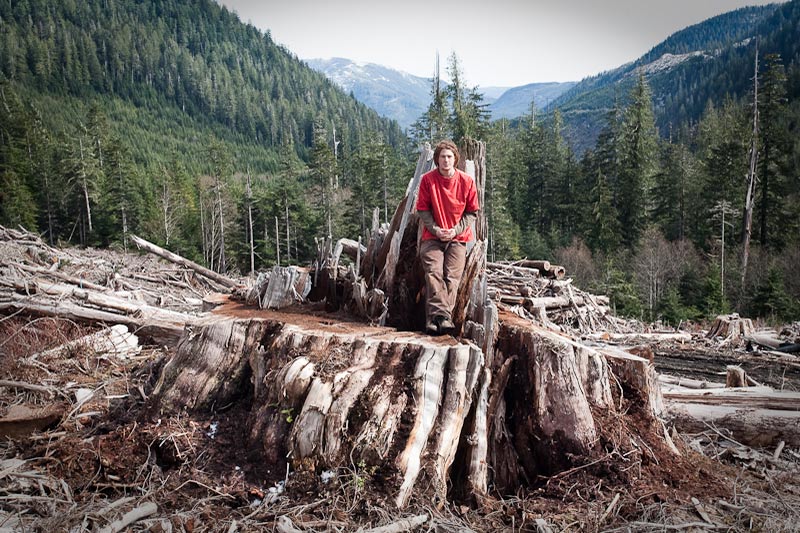
Bugaboo Creek Stump
Circumference: 47ft
Diameter: 15ft
Species: Redcedar
Valley: Bugaboo Creek, Gordon River Valley, Port Renfrew area, Vancouver Island
Estimated Date Cut: 2008
Photographer: TJ Watt
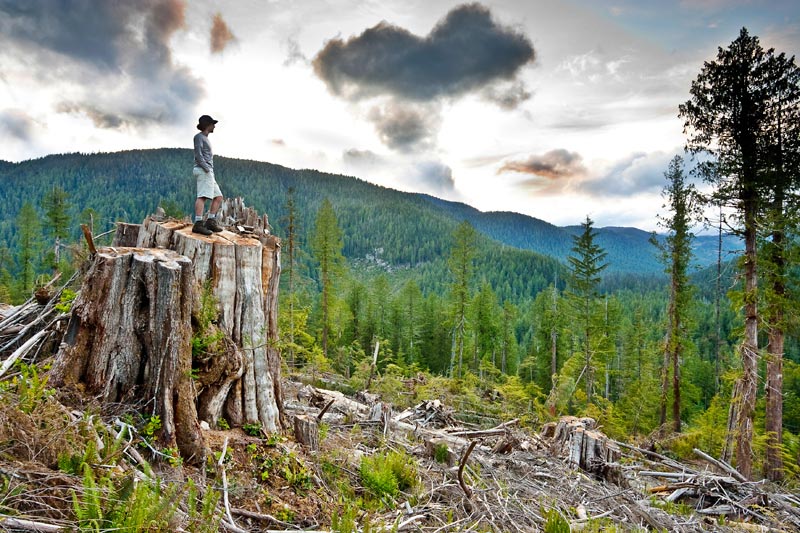
Upper Walbran Clearcut
Circumference: 34ft
Diameter: 11ft
Species: Redcedar
Valley: Upper Walbran Valley, Vancouver Island
Estimated Date Cut: 2006
Photographer: TJ Watt
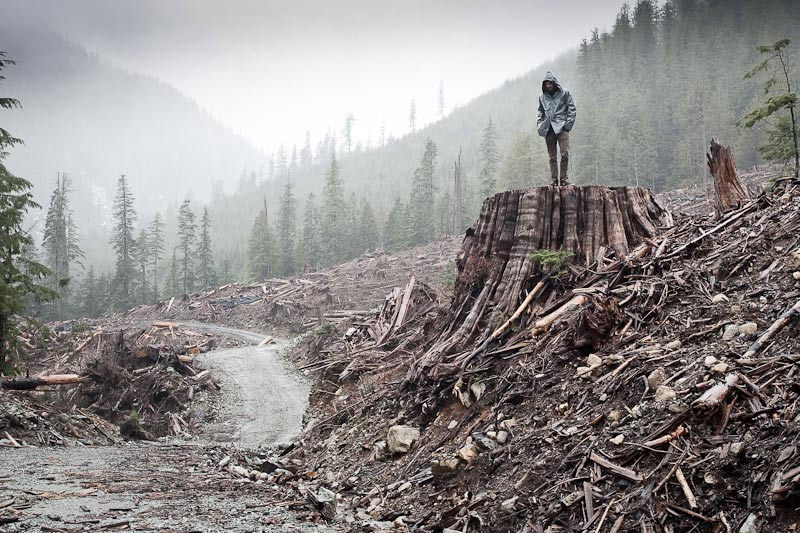
Bugaboo Creek Clearcut
Circumference: 35ft
Diameter: 11ft
Species: Redcedar
Valley: Bugaboo Creek, Gordon River Valley, Port Renfrew area, Vancouver Island
Estimated Date Cut: 2007
Photographer: TJ Watt
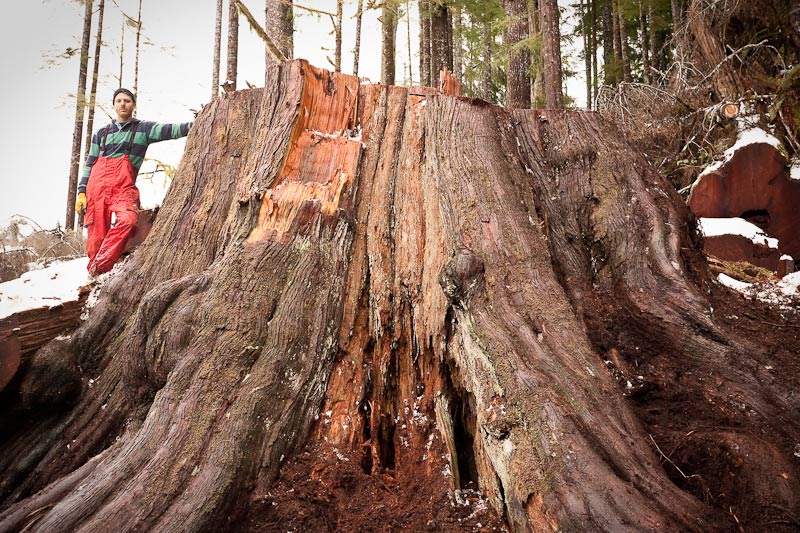
Massive Redcedar Stump
Circumference: Nearly 40ft
Species: Redcedar
Valley: Gordon River Valley, Port Renfrew area, Vancouver Island
Estimated Date Cut: Early 2010
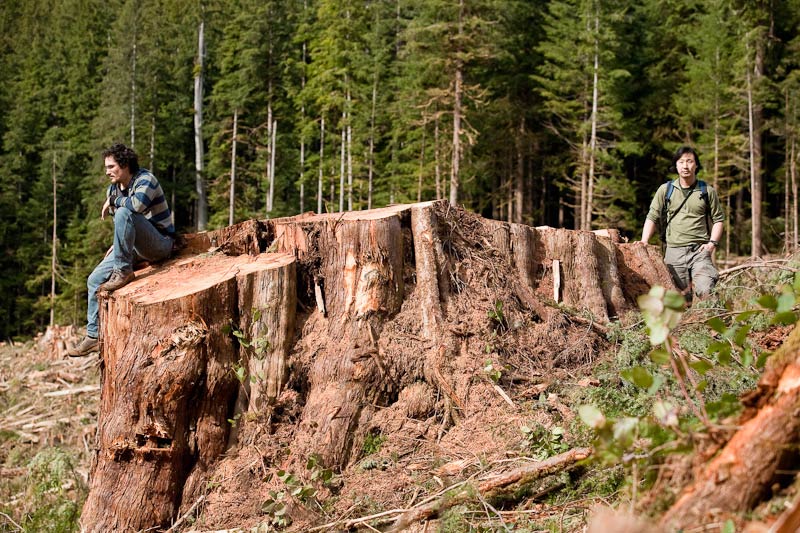
Ancient Redcedar Stump
Species: Redcedar
Valley: Gordon River Valley, Port Renfrew area, Vancouver Island
Since coming to power, the NDP government has so far continued with the destructive status quo of massive old-growth forest liquidation. Despite their 2017 election-platform promise to manage BC’s old-growth forests based on the “ecosystem-based management” approach of the Great Bear Rainforest (where most of the forests on BC’s Central and North Coast were set aside from logging), they haven’t made any concrete policies to protect ancient forests.
Now is the time to make the transition to sustainable logging in second-growth forests instead, and to protect what little remains of these incredible ecosystems.
Amazing organizations like the Ancient Forest Alliance represent the main hope we have of saving what little remains of these ancient forest ecosystems. Please support them in protecting British Columbia’s precious old-growth forests and forestry jobs.
Photo Credit
Photography by TJ Watt, Ancient Forest Alliance
Ancient Forest Alliance
Street Address: Central Building, #303-620 View Street, Victoria, BC
Mailing Address: Victoria Main PO, PO Box 8459, Victoria, BC V8W 3S1
Phone: 250-896-4007
Email: info@ancientforestalliance.org
Website: www.ancientforestalliance.org
Featured Image
Klanawa Valley Giant Stump: This massive redcedar stump was discovered by the Ancient Forest Alliance, freshly cut in the Klanawa Valley, northwest of Nitinat Lake on Vancouver Island, in June 2011.

